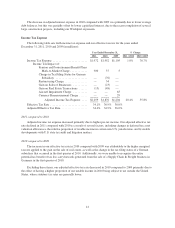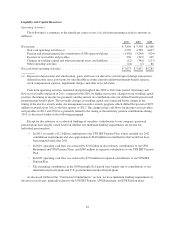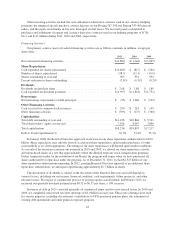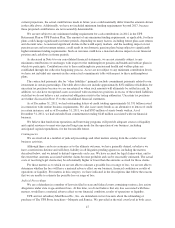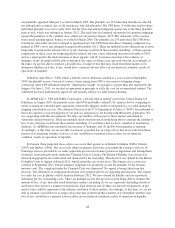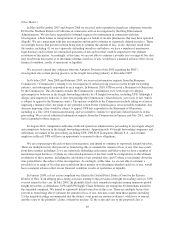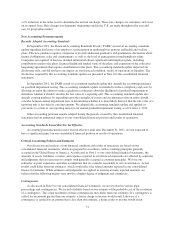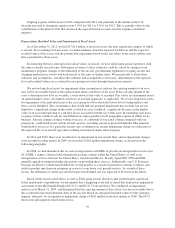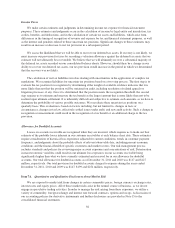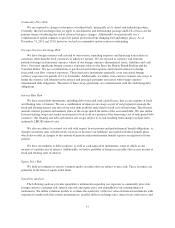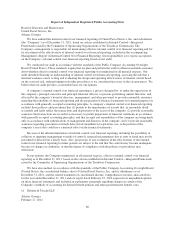UPS 2011 Annual Report Download - page 63
Download and view the complete annual report
Please find page 63 of the 2011 UPS annual report below. You can navigate through the pages in the report by either clicking on the pages listed below, or by using the keyword search tool below to find specific information within the annual report.a 2% reduction in the index used to determine the air fuel surcharge. These rate changes are customary and occur
on an annual basis. Rate changes for shipments originating outside the U.S. are made throughout the year and
vary by geographic market.
New Accounting Pronouncements
Recently Adopted Accounting Standards
In September 2011, the Financial Accounting Standards Board (“FASB”) issued an accounting standards
update regarding disclosure of an employer’s participation in multiemployer pension and health and welfare
plans. This new guidance requires companies to provide additional qualitative and quantitative disclosures about
financial obligations, risks and commitments, as well as the level of participation in multiemployer plans.
Companies are required to disclose detailed information about significant multiemployer plans, including
contributions made to the plans, financial health and funded status of the plans, and expiration of the collective-
bargaining agreements that require contributions to the plans. This accounting standards update impacted our
disclosures only, and did not have any impact on our financial condition, results of operations or liquidity. The
disclosures required by this accounting standards update are presented in Note 6 to the consolidated financial
statements.
In September 2011, the FASB issued an accounting standards update that amends the accounting guidance
on goodwill impairment testing. This accounting standards update is intended to reduce complexity and costs by
allowing an entity the option to make a qualitative evaluation about the likelihood of goodwill impairment to
determine whether it should calculate the fair value of a reporting unit. This accounting standards update also
amends existing guidance by expanding upon the examples of events and circumstances that an entity should
consider between annual impairment tests in determining whether it is more likely than not that the fair value of a
reporting unit is less than its carrying amount. We adopted this accounting standards update and applied its
provisions to certain of our reporting units for our annual goodwill impairment testing as of October 1, 2011.
Other accounting pronouncements adopted during the periods covered by the consolidated financial
statements had an immaterial impact on our consolidated financial position and results of operations.
Accounting Standards Issued But Not Yet Effective
Accounting pronouncements issued, but not effective until after December 31, 2011, are not expected to
have a significant impact on our consolidated financial position or results of operations.
Critical Accounting Policies and Estimates
Our discussion and analysis of our financial condition and results of operations are based on our
consolidated financial statements, which are prepared in accordance with accounting principles generally
accepted in the United States of America. As indicated in Note 1 to our consolidated financial statements, the
amounts of assets, liabilities, revenue, and expenses reported in our financial statements are affected by estimates
and judgments that are necessary to comply with generally accepted accounting principles. We base our
estimates on prior experience and other assumptions that we consider reasonable to our circumstances. Actual
results could differ from our estimates, which would affect the related amounts reported in our consolidated
financial statements. While estimates and judgments are applied in arriving at many reported amounts, we
believe that the following matters may involve a higher degree of judgment and complexity.
Contingencies
As discussed in Note 9 to our consolidated financial statements, we are involved in various legal
proceedings and contingencies. We record a liability based on our estimate of the probable cost of the resolution
of a contingency. The actual resolution of these contingencies may differ from our estimates. If a contingency is
settled for an amount greater than our estimate, a future charge to income would result. Likewise, if a
contingency is settled for an amount that is less than our estimate, a future credit to income would result.
51


